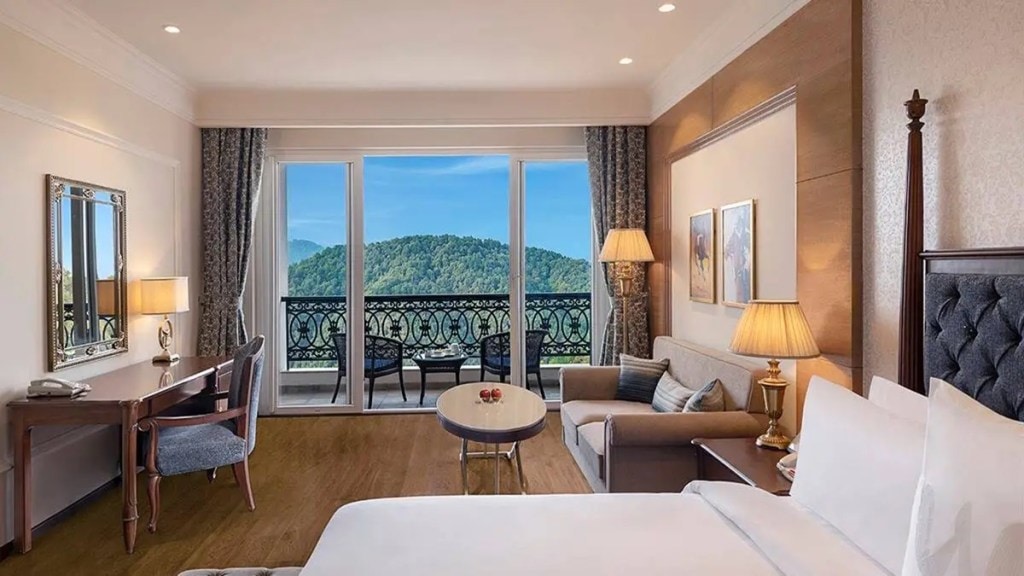It’s yesterday once more for India’s hotel industry. Backed by a rebounding economy, the current fiscal would be one of the best years for the hotel industry, with average room rates (ARRs) poised to rise by 10-15% from a high base of last fiscal. While occupancy is likely to remain high at 68-73%, the industry’s margins are also expected to improve sharply in FY24.
“In FY24, it is expected that the demand from business and leisure will continue to be stronger and foreign tourist arrivals are expected to recover to pre-pandemic levels. Also, various events, including the Indian Premier League, G20 summit, ICC World Cup and continued demand from corporates, leisure travel, meetings incentives conferences and exhibitions (MICE) and weddings will ensure ARRs and occupancies reach new highs,” Pushan Sharma, director–research at Crisil Market Intelligence and Analytics said.
Also Read: OYO to add more hotels to US portfolio
“Meanwhile, players who had reduced their employee-to-room ratio by 20-30% between fiscals 2020 and 2022, have carried forward the cost rationalisation even post the revival in demand. This, along with improving ARRs and occupancy levels, is projected to sharply improve the industry’s margins in fiscals 2023 and 2024,” Sharma added.
According to a Crisil report, the ARR of premium hotels had posted an on year increase of 13% in FY22 and is estimated (hotel industry does not report actual numbers) to have risen by 24-26% in FY23 to a decadal high of Rs 7,500-10,000. The occupancy level, which was at 50% in fiscal 2022, was also estimated to have touched a decadal high of 67-72% in FY23. This is in sharp contrast to fiscal 2021, with ARR falling 20-25% on year and occupancy halving to 31% following the pandemic.
“The hospitality industry did reasonably well during the last financial year. Though the business was not very good in the metros, especially for business hotels, the overall situation can be termed good if we take into account the entire industry across all segments. We are optimistic that the new financial year will bring cheers to the industry,” said Param Kannampilly, chairman and MD of Concept Hospitality and The Fern Hotels & Resorts.
“I don’t think that the growth will be confined to the luxury segment only. It will have an overall positive impact across all sectors. In fact, the highest growth would be witnessed in the mid and leisure segments,” Kannampilly, who is also a member of the executive committee of industry body Federation of Hotel & Restaurant Associations of India, said.
Also Read: TATA group company to operate Cochin Airport’s hotel project with Rs 100 crore investment
According to Rajiv Kapoor, general manager at luxury hotel Fairmont Jaipur, “Travel has become more accessible and the connectivity by roads and air have developed exceptionally in the last two years. On the hospitality front, the market has observed a shift from budget to luxury over the past two years, and this trend is expected to persist in the coming years also.”
Vinutaa S, vice president & sector head (Corporate Ratings) at Icra said, “The pan-India premium hotel occupancy is expected to be about 70-72% in FY24, after recovering to 68-70% in FY23. The pan-India premium hotel ARR is expected to be Rs 6,000-6,200 in FY24, while the occupancy is expected to be at “decadal highs”, the RevPAR (revenue generated per available room) is expected to remain at 20-25% discount to the FY08 peak.”
“We expect the budget segment also to report healthy occupancy and ARRs in FY24. The demand uptick resulted in a pick-up in supply announcements and the commencement of deferred projects in the last 6-9 months. However, supply which is expected to grow at 3.5-4% per annum over the medium term, would lag demand,” she added.
Icra had revised the business outlook for the Indian hospitality industry to ‘positive’ from ‘stable’.
According to a CareEdge report, rising costs of raw materials, high manpower costs and increasing borrowing costs due to rising interest rates may hurt operating profitability. The ARR is expected to continue to inch higher, thereby boosting RevPAR for industry players, which is estimated to grow 3-5% over FY23 levels.
The occupancy and ARRs have been posting growth in FY23, with occupancy rising to 65-67% and ARRs to Rs 7,300, according to CareEdge.

